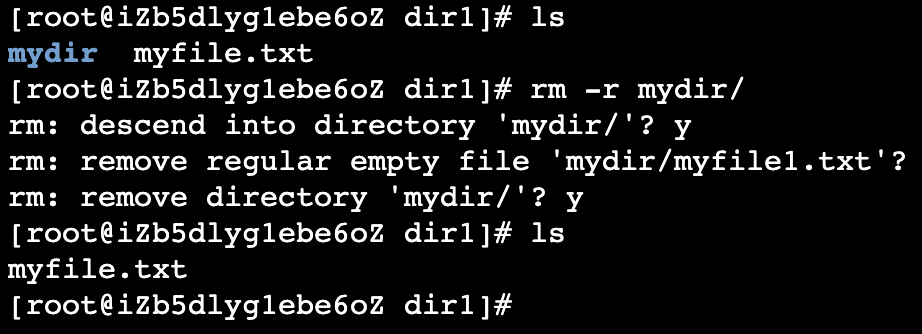
【Linux命令】每天一个Linux命令(7):rm命令
每天一个Linux命令(7):rm命令命令:rm描述:rm(remove)用于删除文件或目录。语法:rm [选项] 文件常用选项:-i:在删除文件之前进行交互式确认。-r:递归地删除目录及其内容。-f 2023-6-3 00:4:19 Author: 利刃信安攻防实验室(查看原文) 阅读量:16 收藏
每天一个Linux命令(7):rm命令命令:rm描述:rm(remove)用于删除文件或目录。语法:rm [选项] 文件常用选项:-i:在删除文件之前进行交互式确认。-r:递归地删除目录及其内容。-f 2023-6-3 00:4:19 Author: 利刃信安攻防实验室(查看原文) 阅读量:16 收藏
每天一个Linux命令(7):rm命令
rmrm [选项] 文件-i:在删除文件之前进行交互式确认。 -r:递归地删除目录及其内容。 -f:强制删除,无需进行确认。
1.
rm file.txtrm -r directory/3.
rm file1.txt file2.txt4.
rm -i file.txt5.
rm -rf directory/说明:
rm 命令是一个用于删除文件或目录的强大工具。请谨慎使用,因为删除操作不可恢复。使用 rm 命令时,请确保提供正确的文件路径,并确认您真正想要删除这些文件或目录。使用 -r 选项时,将递归地删除目录及其内容。使用 -i 选项时,将在删除之前进行交互式确认,以避免意外删除。使用 -f 选项时,将强制删除文件或目录,无需进行确认。请注意,删除操作是永久性的,被删除的文件无法恢复,因此在使用 rm 命令时要谨慎操作。
[[email protected] ~]# rm --helpUsage: rm [OPTION]... [FILE]...Remove (unlink) the FILE(s).-f, --force ignore nonexistent files and arguments, never prompt-i prompt before every removal-I prompt once before removing more than three files, orwhen removing recursively; less intrusive than -i,while still giving protection against most mistakes--interactive[=WHEN] prompt according to WHEN: never, once (-I), oralways (-i); without WHEN, prompt always--one-file-system when removing a hierarchy recursively, skip anydirectory that is on a file system different fromthat of the corresponding command line argument--no-preserve-root do not treat '/' specially--preserve-root[=all] do not remove '/' (default);with 'all', reject any command line argumenton a separate device from its parent-r, -R, --recursive remove directories and their contents recursively-d, --dir remove empty directories-v, --verbose explain what is being done--help display this help and exit--version output version information and exitBy default, rm does not remove directories. Use the --recursive (-r or -R)option to remove each listed directory, too, along with all of its contents.To remove a file whose name starts with a '-', for example '-foo',use one of these commands:rm -- -foorm ./-fooNote that if you use rm to remove a file, it might be possible to recoversome of its contents, given sufficient expertise and/or time. For greaterassurance that the contents are truly unrecoverable, consider using shred.GNU coreutils online help: <https://www.gnu.org/software/coreutils/>Full documentation <https://www.gnu.org/software/coreutils/rm>or available locally via: info '(coreutils) rm invocation'
文章来源: http://mp.weixin.qq.com/s?__biz=MzU1Mjk3MDY1OA==&mid=2247504399&idx=4&sn=289a781858a5bdc60d53f27b67b4c11c&chksm=fbfb62c2cc8cebd4796eb908c7ae540356113e79127af5c555655fc26c227d6b8a372f04df96#rd
如有侵权请联系:admin#unsafe.sh
如有侵权请联系:admin#unsafe.sh